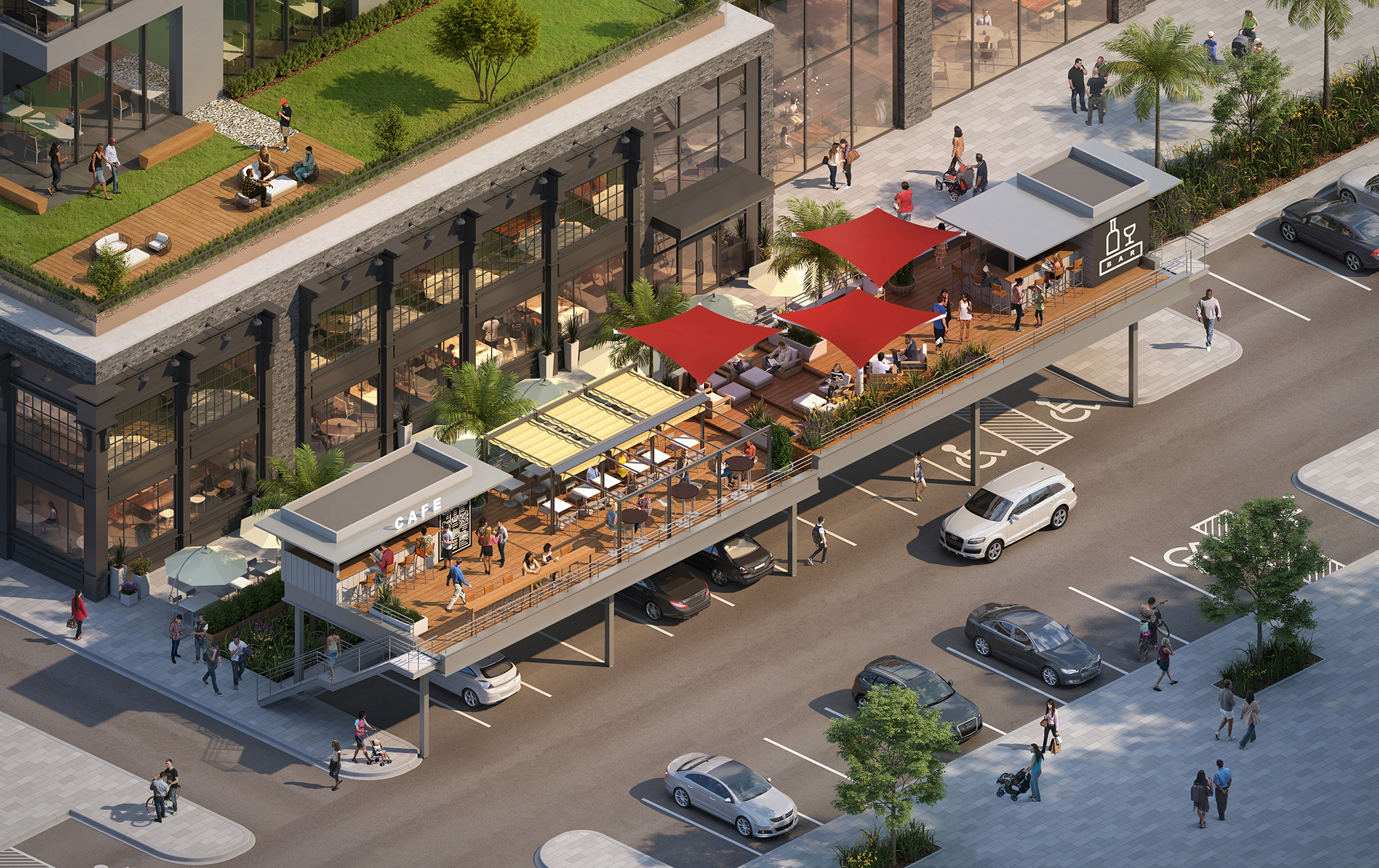Throughout the pandemic, we have heard predictions of the demise of cities. Indeed, the world’s cities have taken a mighty hit due to the impact of COVID-19. The primary expectation was that the virus would fuel new growth and development further from the existing city centers.
However, as urban locations now begin to regain their normalcy, the benefits of urbanity are becoming apparent due to our inherent need and desire for social connections. My personal observation of the re-habitation of public spaces confirms our human desire to be together. Our urban centers are coming back to life. We have undergone a metamorphosis from vacant parks and abandoned streets to vibrant commercial districts and active parkland.
The social benefits of building walkable neighborhoods in the suburbs are plentiful and a potential cure for the isolation so many felt while locked away in their homes. According to the Environmental Protection Agency (EPA) the average American spends 93 percent of their life indoors. The pandemic only made it worse! The advantages of living in a walkable place were crucial to my personal experience during the shutdown.
Walking to the local grocer, a park and even through the nearly deserted network of neighborhood streets were vital to my personal health and well-being. While not a particularly “dense” environment by urban standards, the physical form of the human-scaled streets and corresponding building types within my community promotes a desire and the ability to easily be outside. It also increases the likelihood of having a chance encounter with a “distanced” neighbor from their front porch or balcony.
THE BENEFITS OF A WALKABLE WORLD
There are multiple benefits to creating walkable places. I’ve touched upon a few of the social benefits such as health and well-being; however, by promoting an active lifestyle, we can address obesity, improve mental health and personal happiness all by producing a more vibrant sense of place. Walkable places are not only healthier, but they also tend to be wealthier because they support local businesses by providing the street infrastructure to allow retail to flourish.
Untethered from their daily commute during COVID workplace shutdowns, work from home became work from anywhere. Many people made choices to move to larger homes with bigger yards by relocating further from the physical location of their employer while holding onto the desire for the urban amenities that come with walkable places.
“Zoomburbs” have emerged in desirable locations outside of cities where residents can live a high-amenity lifestyle while telecommuting for work each day. These places are best characterized by the interconnected network of streets and the nature of the retail businesses and restaurants that develop. Jeff Speck, a well-regarded architect and urbanist states, “Get walkability right and so much of the rest will follow.” This form of suburban growth leads to more sustainable behavior and harkens back to the town as the foundation for human communal habitation.
DESIGNING WALKABLE SUBURBS FOR POST-COVID-19
First and foremost, we must create walkable destinations. We need public spaces that give people a reason to go there and return time and time again. These places can vary in size, shape and scale, but must be easily accessed by walking. They can be formal or natural but must feel comfortable, safe, clean and welcoming to all. A place worthy of creating memories.
Suburban places that merit memorable experiences are often a rare find due to the exorbitant amount of parking spaces required at every destination. Utilizing the parking fields at sprawling retail and business centers during the pandemic made outdoor dining an absolutely miserable experience. The restaurant industry suffered mightily in both cities and suburbs during the pandemic. As restaurants began to reopen, the urban locations claimed the sidewalk and curbside street for outdoor dining, creating makeshift cafés that are evolving into permanent street-eatery solutions. Most suburban locations did not have the luxury of claiming sidewalks where pedestrian activity intermingles with restaurant patrons. Suburban restaurants had to use soulless parking lots as outdoor dining space to remain open and viable.
Even before the pandemic, we contemplated ways to “elevate” the suburban al fresco dining experience. Suburban municipalities were already losing younger generations due to the lack of walkable places and interesting destinations. The pandemic made this a priority. A solution to the outdoor dining experience in a suburban shopping center includes reimagining the space between the parking lot and the building with the addition of an elevated dining deck, or in this example, “finding” space where none existed by elevating the patrons above the parking spaces. The elevated streeteatery maintains the parking for cars yet brings excitement and dignity to the suburban dining experience.
The correlation between density (units per acre) versus “crowding” (persons per space) is more indicative of how the virus has spread and might spread again in the future. Rather than reinforce the notion that isolation in our new suburban communities is our best defense, we should aspire to introduce built environments that will facilitate social distance when necessary yet provide for daily social interaction through the creation of walkable places. Walkable neighborhoods are designed and built as multimodal communities, being less automobile-dependent with more access to alternative transportation modes. The post-COVID suburban renaissance, rather than depending on car-centric patterns of growth, must be envisioned as a pedestrian-scaled, coinhabited environment.

